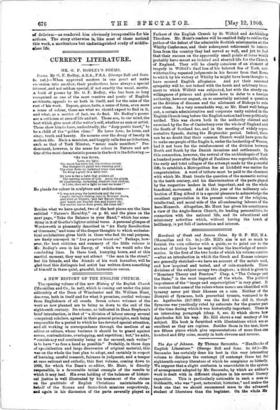Handbook of Greek and Roman Coins. By G. F. Hill,
M.A. (Macmillan and Co. 9s.)—Mr. Hill's aim is not so much to furnish the coin collector with a guide, as to point out to the student of history how he may utilise the knowledge of numis- matics. In the first of the two books of which his volume consists —after an introduction in which the Greek and Roman coinages are generally sketched—we have an account of the metals used, and how 'acquired and tested, and of coin-standards. These divisions of the subject occupy two chapters ; a third is given to "Monetary Theory and Practice." Chap. 4, " The Coinage and the State," is the most important of the whole. The political importance of the "image and superscription" is very greet. It is curious that some of the rulers whose names are identified with tyranny never put their likeness on a coin. Neither of the Dionysii of Syracuse, both proverbial tyrants, ventured to do so. Agathocles (317-289) was the first who did it, though Syracuse was rractically ruled by autocrats for the greater part of the time during which it was historically important. There is an interesting paragraph (chap. 8, sec. 2) which shows how Agathocles felt his way. Mr. Hill shows a real mastery of his subject. His book, is furnished with illustrations which are as excellent as they are copious. Besides those in the text, there are fifteen plates which give representations of more than one hundred and fifty coins, mostly in both obverse and reverse.






































 Previous page
Previous page